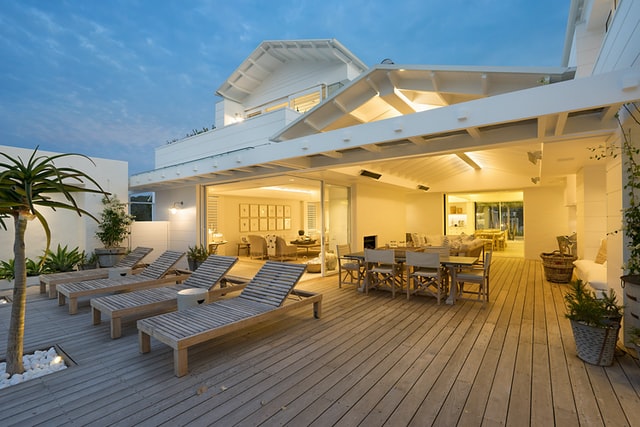
A deck is basically a big, flat, outdoor walking surface, but it has the potential to be so much more. With so many different decking materials available, it can become whatever you want it to be. The downside of this is that it can be difficult to weigh the pros and cons of each to determine which is right for you and your home. Here is a handy guide to some of the most common decking materials and the strengths and weaknesses of each.
1. Aluminum
If you want a deck that can last forever, you might want to think about aluminum. It is impervious to many of the conditions that could harm other materials, including weather, insects, and rust. Aluminum is easy to maintain and moderately priced. If you build the deck yourself, it is lightweight and easy to work with. Its slip-resistant coating comes in many different colors but doesn’t mimic the appearance of natural materials. You also need to secure the decking to the substructure with special fasteners.
2. Wood
Wood was the original decking material and is still one of the most popular choices. It is also one of the most versatile since there are so many different types of wood to choose from. However, not all wood decking material is sourced responsibly, which is bad for the environment. If you choose FSC Massaranduba wood tile, you can have peace of mind knowing that it complies with standards established by the Forest Stewardship Council for environmental friendliness.
3. Plastic
Like the look of a wood deck but don’t want to deal with the extensive maintenance required? Consider a plastic deck instead. PVC decking mimics the appearance of wood but requires almost no maintenance. It lasts forever, and you don’t have to worry about splinters. To avoid having a negative impact on the environment, make sure the decking material is made from recycled plastic. It varies in quality, with higher-grade materials more closely approximating wood. It tends to be on the higher end of the price scale and can be vulnerable to high temperatures. When you walk on the planks, you may notice them squeaking underfoot.
4. Composite
Composite decking is a blend of both wood and plastic fibers that offer the advantages of both. Typically made from waste wood and recycled plastic, it is an environmentally friendly option. It tends to be more expensive than wood but requires less maintenance and is made in a variety of grain patterns and colors.